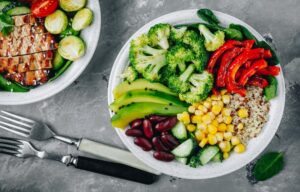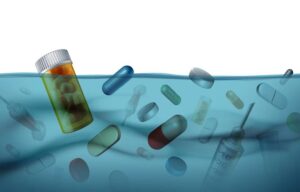Vitamins and minerals: those little things that are good for you

The proteins , fats and carbohydrates that we have seen in previous lessons are part of the macronutrients : nutrients that we need in large quantities .
Vitamins and minerals are part of the micronutrient family : they are essential elements for life, but which are needed in very small quantities (and which do not provide any energy in caloric form).
They perform essential functions in all the biochemical processes of the organism: metabolism, energy, immune system, synthesis of bones and tissues, etc.
Micronutrients are essential , that is to say that the body does not produce any (at least, it does not produce them in sufficient quantity): they must imperatively be provided by food (with the exception of vitamin D which requires sun exposure to be able to produce enough of it).
There are 13 vitamins, which are classified into two groups: water-soluble and fat-soluble vitamins.
They are so called because they are soluble in water : therefore, they disperse in the liquids of the body, without however having the capacity to be stored. This factor makes them very non-toxic, since even in the event of overconsumption, they are evacuated in the urine .
But the other side of the coin is that you have to provide it regularly through food, otherwise a deficiency can set in over the long term .
Vitamin C is mainly found in certain fruits and vegetables (red pepper, parsley, blackcurrant, kiwi, citrus fruits, etc.).
As for group B vitamins, they are found in offal (especially liver), dairy products , egg yolk , fish and shellfish , but also in legumes and oilseeds , and of course in nutritional yeasts .
Note that vitamin B12 is only found in animal products .
fat soluble vitamins
These are vitamins A, D, E and K (the latter is divided into 2 families, vitamin K1 and vitamin K2 or menaquinone).
They are so called because they are solubilized and stored in fatty tissue .
The advantage is that we can bring them more punctually . The disadvantage is that the risk of excess is possible if you consume too large quantities on a regular basis (for example, if you eat offal too regularly over time).
Generally, fat-soluble vitamins are provided by sources of dietary lipids (oils, fatty fish, egg yolks, organ meats, liver, oilseeds, etc.), with the exception of vitamin D, which is produced mainly via sun exposure (outside the fall and winter months), and vitamin K1, which is found in some green vegetables.
Most minerals are found in abundant quantities in nature, in the water of rivers, lakes and oceans, as well as in the ground.
They are so called because they require intakes of more than 100 mg per day .
The main salts in the body are: calcium, magnesium, potassium, phosphorus, sulphur, sodium and chlorine.
Trace elements
They are so named because they are found in trace amounts (oligo meaning “in small numbers”), and together account for less than 15 g of total body mass
Trace elements that are considered essential are: iron, zinc, copper, manganese, fluorine, iodine, molybdenum, selenium (and to a lesser extent cobalt, nickel, vanadium and ‘tin).
Chromium was traditionally part of the essential trace elements, however in 2014, following an extensive review of the literature on its subject, the EFSA concluded that there was no apparent benefit from this mineral, and therefore stipulates that no intake can be advised.
Read also | Each of these nutrients exists in several forms. To learn a little more about the shapes to favor, you can read our article on the subject .
The functions of micronutrients are as diverse as they are varied. There are around fifty health claims officially assigned to them, each corresponding to its own role.
The major and main role to which all the micronutrients contribute is that of energy metabolism , that is to say all the chemical reactions at the level of the cells of the organism allowing the production of energy from food. that we ingest (especially through the whole process of digestion).
Other processes and functions in which these nutrients participate include:
Maintaining the structure of our bones or our teeth will involve vitamins D , K2 and magnesium (without forgetting calcium of course);
The defense against oxidative stress primarily involves vitamins C and E ;
The metabolism of homocysteine during methylation processes involves vitamins B6 , B9 and B12 , etc.
Often, if one of the elements is present in insufficient quantity, it then becomes the weak link in a chain that can collapse, hence the importance of having enough synergistic elements .
But each vitamin or mineral can also have its own role , or at least a role in which its action is decisive.
It is therefore easy to understand that one or more nutrient deficiencies can lead to various and varied symptoms and disorders, even major illnesses in the case of severe deficiencies, which can impact the functioning of a large number of physiological processes .







